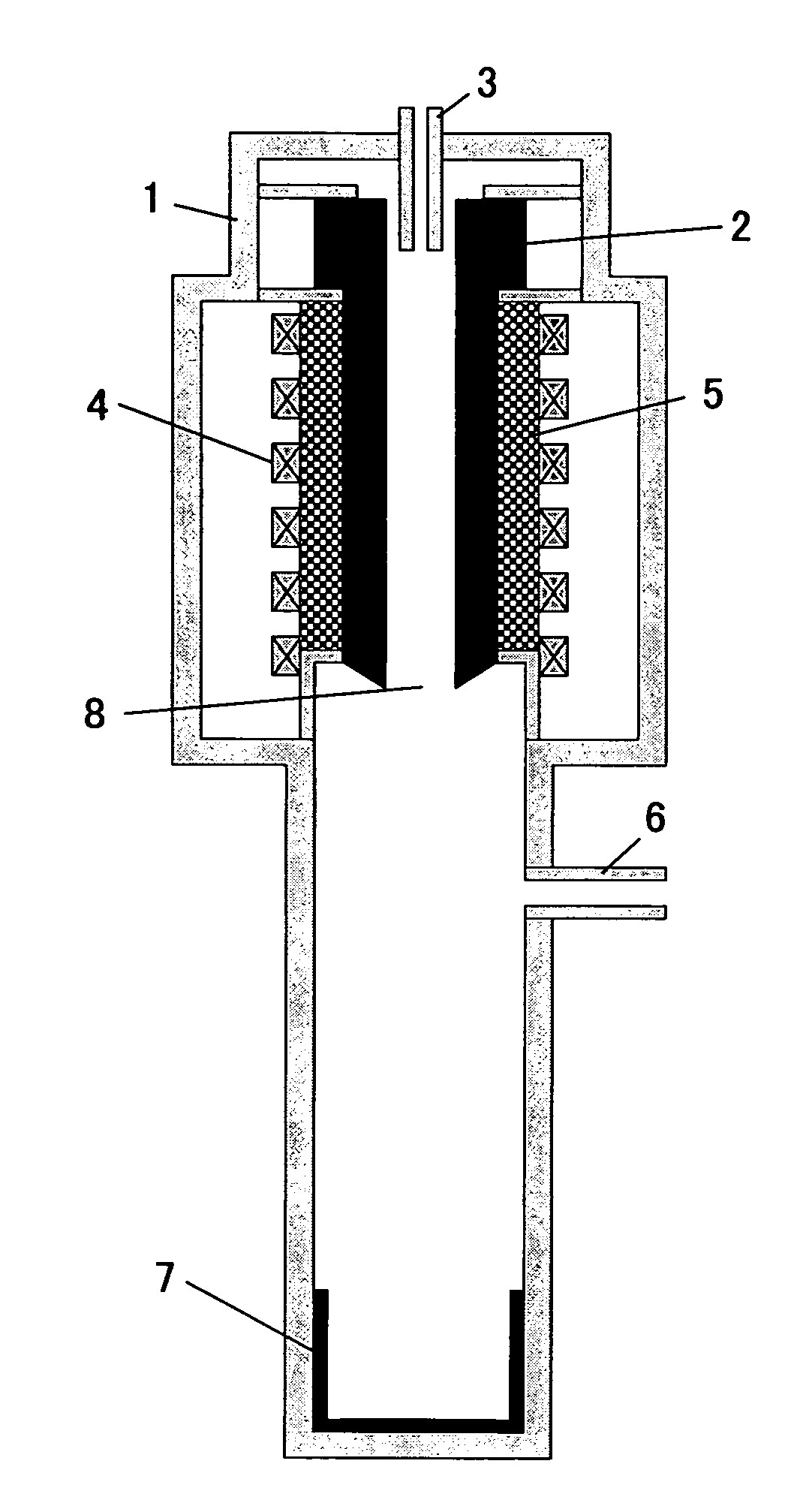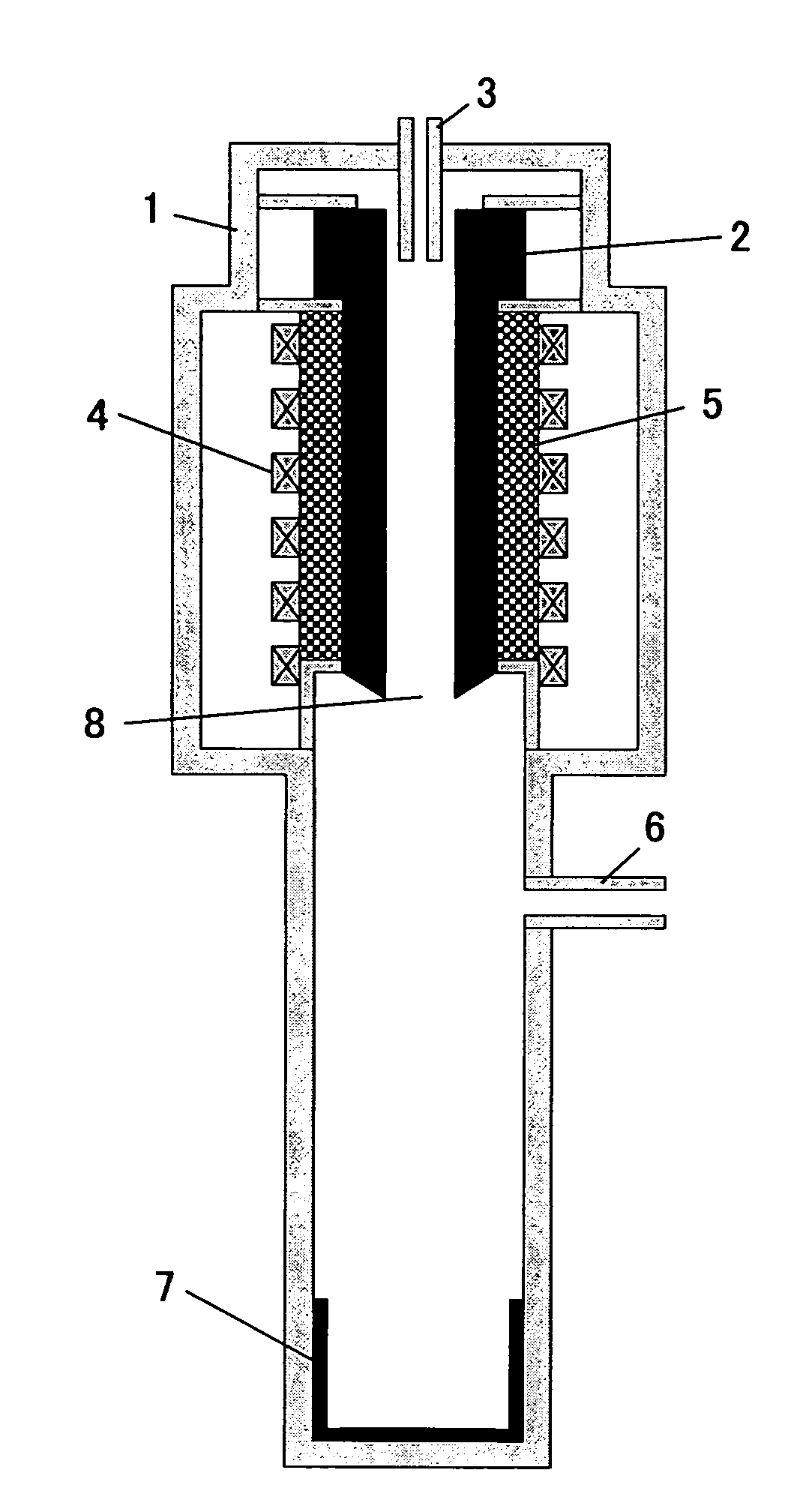Cylindrical vessel made of carbon and process for making silicon
a cylindrical vessel and carbon technology, applied in the direction of silicon compounds, manufacturing tools, chemistry apparatus and processes, etc., can solve the problems of reducing production efficiency, cracking of carbon materials, and requiring very troublesome procedures, so as to reduce the formation of sic, the effect of resisting deformation and significant suppressing of vessel cracking or other adverse phenomena
- Summary
- Abstract
- Description
- Claims
- Application Information
AI Technical Summary
Benefits of technology
Problems solved by technology
Method used
Image
Examples
example 1
[0040]On a reaction apparatus as shown in FIG. 1 was mounted a reaction vessel for generation of silicon (inside diameter: 45 mm, wall thickness: 15 mm, entire length: 1000 mm) made of a carbon material (thermal expansion coefficient: 4.8×10−6 / ° C.) having a bulk specific gravity of 1.82. A mixed gas containing 10 kg / H of trichlorosilane and 40 Nm3 / H of hydrogen was passed into the reaction vessel, and the reaction vessel was heated to a temperature of 1450° C. or higher by high-frequency heating to deposit polycrystalline silicon for 100 hr. After completion of the reaction, the reaction vessel was removed from the reaction apparatus and the state of the reaction vessel (the presence of cracking of the reaction vessel and the depth of the inside of the reaction vessel permeated with silicon) was observed. The results are shown in Table 1.
[0041]Silicon deposition reaction was performed in the same manner as described above except for use of a reaction vessel for generation of silico...
examples 2 to 4
[0042]Silicon deposition reaction was performed in the same manner as Example 1 except for use of a reaction vessel for generation of silicon made of a carbon material having the bulk specific density and the thermal expansion coefficient shown in Table 1, and the state of the reaction vessel after completion of the reaction was observed. The results are shown in Table 1.
PUM
| Property | Measurement | Unit |
|---|---|---|
| specific gravity | aaaaa | aaaaa |
| thickness | aaaaa | aaaaa |
| specific gravity | aaaaa | aaaaa |
Abstract
Description
Claims
Application Information
 Login to View More
Login to View More - R&D
- Intellectual Property
- Life Sciences
- Materials
- Tech Scout
- Unparalleled Data Quality
- Higher Quality Content
- 60% Fewer Hallucinations
Browse by: Latest US Patents, China's latest patents, Technical Efficacy Thesaurus, Application Domain, Technology Topic, Popular Technical Reports.
© 2025 PatSnap. All rights reserved.Legal|Privacy policy|Modern Slavery Act Transparency Statement|Sitemap|About US| Contact US: help@patsnap.com


